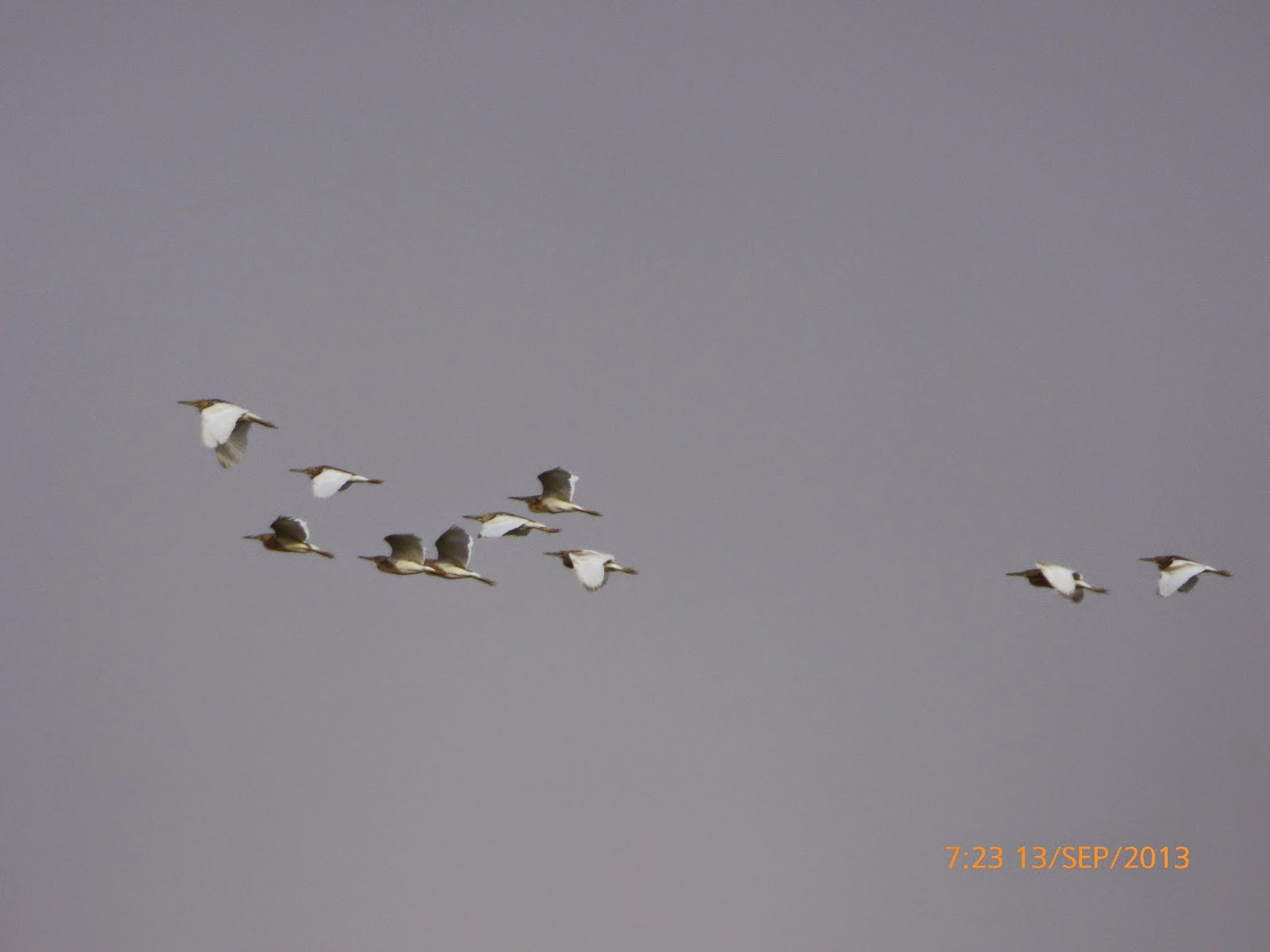Temperatures were a cool 28 degrees centigrade and there was a slight breeze which developed into a stronger breeze later and temperature rose to about 35 degrees before I left.
On arrival we saw a Moorhen disappearing into the reeds and while I heard lots of these thereafter I did not see any others, too quick for me I'm afraid. That said I can't blame them as that morning I was outnumbered by hunters 8:1, so in a way its surprising I saw any birds at all.
All through the morning Yellow Wagtails were much in evidence. There were a couple of subsecies represented and a few younger birds which did not quite have full adult plumage yet.
 |
| Yellow Wagtail (feldegg) |
.JPG) |
| Young Yellow Wagtail (flava) |
Larks were also about, though not is great numbers, the ubiquitous Crested Lark which have a habit of following you, perching on a rock or mound and watching what you are up to, I suppose here they replace the White Cheeked Bulbul at Al Hayer which I did not see at all at this site.
 |
| Crested Lark |
 |
| Greater Short Toed Lark (thanks Rob) |
 |
| Blue Cheeked Bee Eater |
 |
| Hoopoe |
 |
| Woodchat Shrike |
 |
| Woodchat Shrike |
 |
| Black Winged Stilt |
 |
| Little Ringed Plover |
 |
| Kentish Plover |
 |
| Little Stint |
 |
| Wood Sandpiper |
Cattle Egret were all over the place this time, in most instances in pairs but this relatively young looking one was monitoring the scene from atop a bush near the entrance to the area.
 |
| Cattle Egret |
 |
| Little Egret |
 |
| Squacco Heron on the move |
As I walked out of the lake area again into the desert this little chap accompanied me. Not seen one of these around the area recently as they were off on their travels.
 |
| Isabelline Wheatear |
 |
| Common Whitethroat |
The process of identification can be a painful one at times, though I generally get there by sticking at it or calling on more knowledgable friends. There is one more photo to come once I have worked out what it is.
Other species seen and heard but not quick enought to get photos included the Marsh Harrier which was always too distant to get a useful photo and a lot of quite boisterous Graceful Prinia, always too quick to scatter before the camera could focus.
Species List
|
|||
Species
|
Count
|
Species
|
Count
|
Little Ringed
Plover
|
2
|
Hoopoe
|
2
|
Kentish Plover
|
6
|
Black Winged Stilt
|
6
|
Cattle Egret
|
6
|
Woodchat Shrike
|
1
|
Squacco Heron
|
10
|
Barn Swallow
|
35
|
Little Egret
|
1
|
House Sparrow
|
25
|
Marsh Harrier
|
1
|
Graceful Prinia
|
15
|
Laughing Dove
|
10
|
Little Stint
|
3
|
Blue Cheeked
Bee-eater
|
11
|
Wood Sandpiper
|
2
|
A very pleasant morning :-)
No comments:
Post a Comment